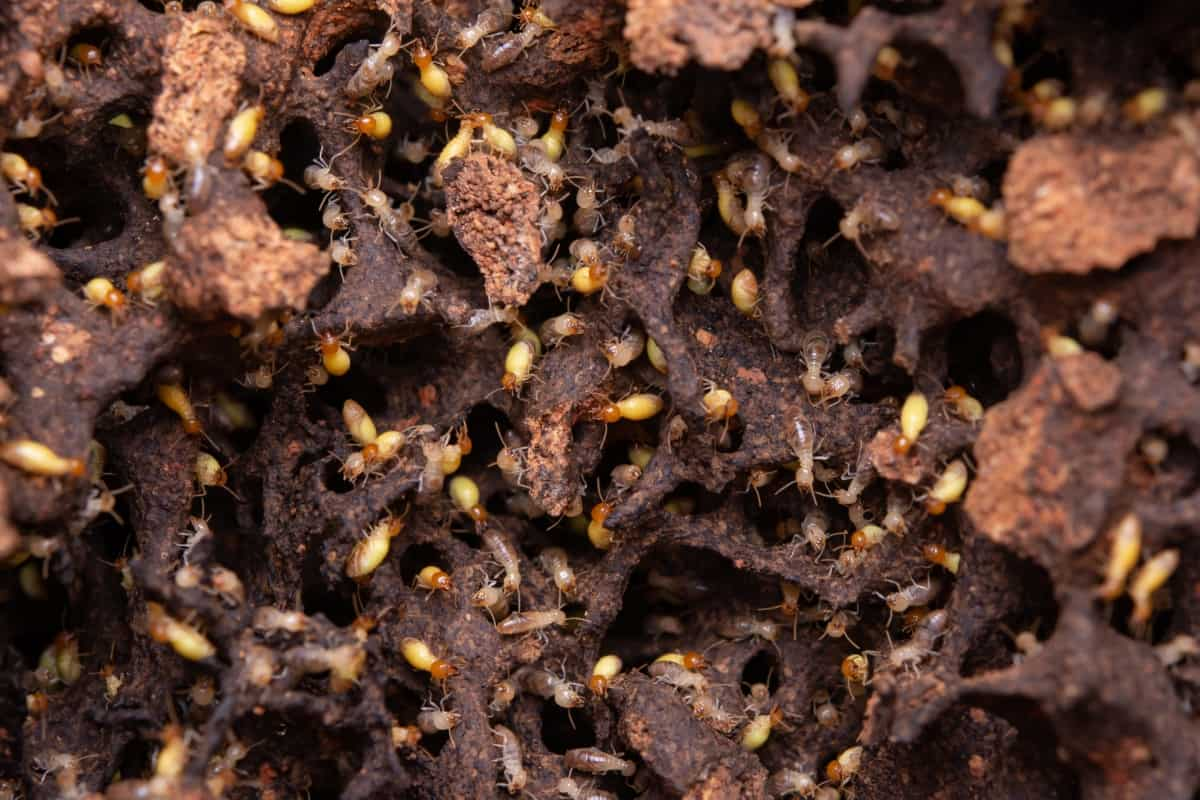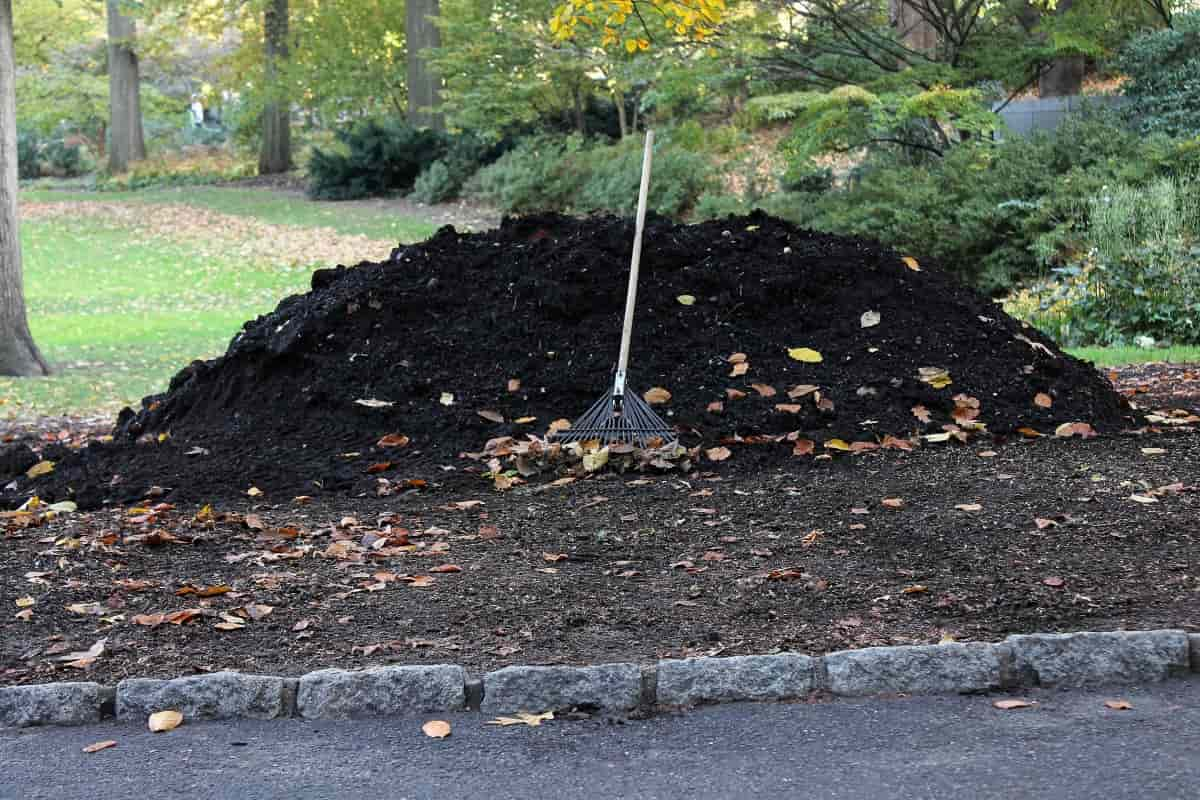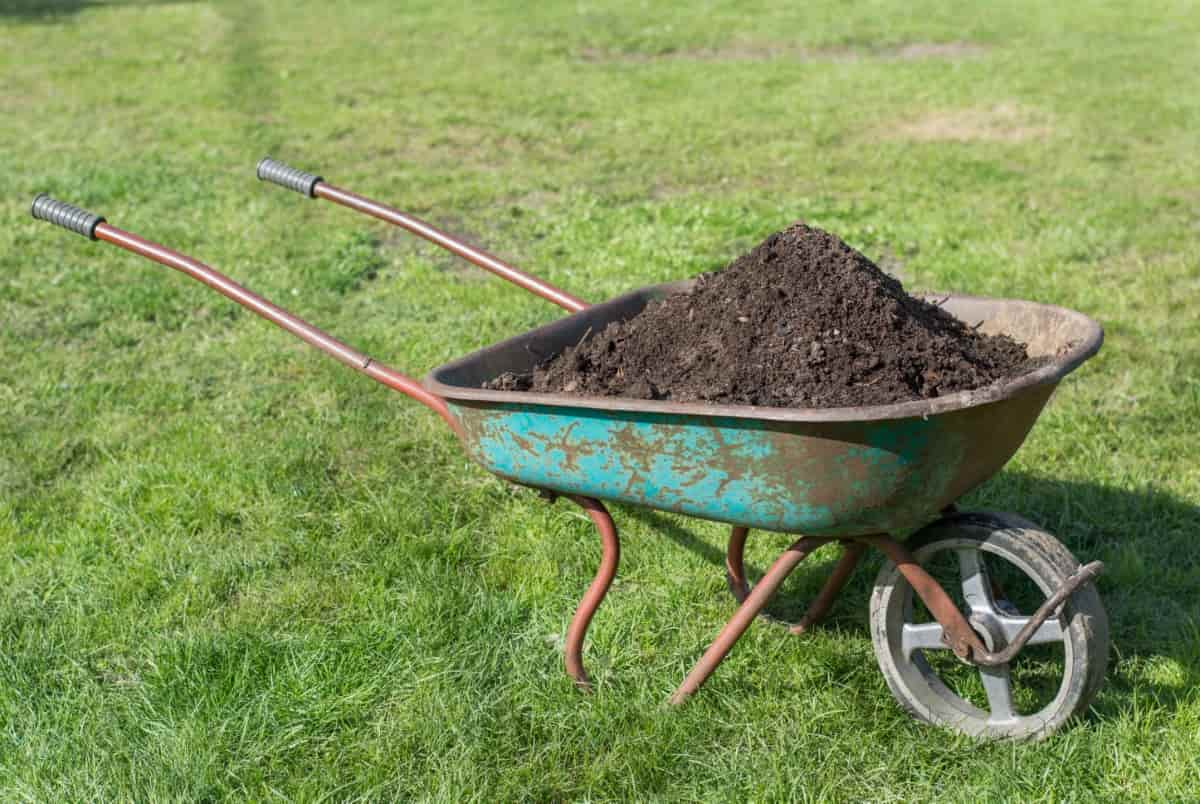If you are an avid gardener or someone who cares about sustainable practices, you likely understand the importance of composting. Composting enriches the soil, reduces waste, and promotes a healthier ecosystem. However, there is a potential hitch in this otherwise virtuous cycle – termites. These insects can wreak havoc on your compost pile, turning your efforts into a termite feast.

This guide will delve into the world of termites and their impact on compost. We will explore why termites are attracted to compost piles, their risks, and, most importantly, how to eliminate them using natural prevention techniques effectively. While chemical solutions might be available, we will focus on environmentally friendly methods that align with your composting goals.
How to Get Rid of Termites in Compost
Understanding the Termite Problem in Compost: Causes and Consequences
The termite problem in compost arises due to the attraction of termites to the moist and nutrient-rich environment created by the decomposing organic matter. Termites play a vital role in natural ecosystems by breaking down dead plant material, but their presence in compost can have negative consequences.
They accelerate the decomposition process, causing compost to break down too quickly and lose its intended nutrient value. And also, termites can spread to other areas, potentially infesting structures or gardens. Regular monitoring and, if necessary, localized treatment can prevent termites from undermining the benefits of composting.
Identifying Termites in Compost: Signs and Symptoms
- Frass Accumulation: Presence of termite droppings near compost piles, resembling small wood-colored pellets.
- Mud Tubes: Formation of thin, muddy tubes on the surface of the compost, created by termites for protection while foraging.
- Wood Damage: Detection of damaged wood materials within the compost, as termites consume cellulose-rich materials.
- Swarming: Observation of termite swarms around compost piles, especially during warmer months.
- Hollowed Items: Identification of hollowed or weakened wooden items within the compost area, indicating termite activity.
The Importance of Early Detection and Prevention of Termite Infestations in Compost
Termites, being voracious decomposers, can disrupt the composting process by rapidly consuming organic matter meant for decomposition, leading to incomplete decomposition and compromised nutrient content. This can hinder the production of nutrient-rich compost essential for soil enrichment. Moreover, if infested compost is spread, termites can transfer to other areas, causing structural and agricultural damage.
In case you missed it: How to Get Rid of Maggots in Compost Bin: Tips and Natural Prevention Techniques

Early identification allows for targeted intervention, minimizing the use of chemicals and maintaining the ecosystem’s natural balance. Timely prevention through proper management practices, like turning and monitoring compost piles, ensures that the composting process proceeds efficiently, yielding high-quality compost while preventing the proliferation of destructive termite colonies.
Natural Methods to Eliminate Termites From Compost: A Comprehensive Guide
Creating an Unfavorable Environment for Termites in Compost: Tips and Techniques
- Termites thrive in damp environments, so ensure your compost pile is well-drained. Regularly turn the compost to promote aeration and reduce excess moisture buildup.
- Termites dislike well-aerated compost. Turn the pile frequently to break up clumps, increase oxygen flow, and disrupt their nesting sites.
- Termites are attracted to wood and cellulose-rich materials. Minimize their presence by excluding untreated wood scraps and cardboard from the compost mix.
- Termites are drawn to high-carbon materials. Balance your compost with a proper mix of carbon-rich (e.g., leaves, straw) and nitrogen-rich (e.g., kitchen scraps) materials to reduce termite attraction.
- Elevating the compost pile on a platform or using a raised bin can deter termites from gaining easy access, as they prefer ground-level entry.
Using Beneficial Insects to Control Termite Populations in Compost
Beneficial insects, such as nematodes and predatory beetles, act as natural predators of termites, helping to maintain a balanced ecosystem and prevent termite overgrowth. Nematodes, microscopic worms, actively seek out termite larvae and infect them with bacteria, leading to their demise. Predatory beetles, on the other hand, feed on adult termites, helping to control their numbers.
By introducing these beneficial insects into compost piles, gardeners and composters can create a sustainable and eco-friendly approach to termite management, reducing the need for chemical interventions. This natural control method not only safeguards compost quality but also promotes environmental harmony by minimizing the impact on non-target species and maintaining the overall health of the composting system.
Effective Organic Treatments for Termite Infestations in Compost
- Neem Oil: It is a product from the neem tree seeds and contains compounds that disrupt termite growth and reproduction. Mixing neem oil with water and applying it to the compost can deter termites.
- Diatomaceous Earth: This natural powder, made from fossilized diatoms, has abrasive properties that damage termites’ exoskeletons, leading to dehydration and death.
- Boric Acid: A diluted boric acid solution can be sprayed on the compost to poison termites. Boric acid interferes with their digestive systems and can spread within the termite colony.
- Beneficial Microbes: Applying beneficial microbes like Bacillus thuringiensis can disrupt termite activity. These microbes produce toxins that target specific termite species.
In case you missed it: From pH Levels to Composting: How to Prepare the Best Soil for Your Flower Garden

Implementing Physical Barriers to Prevent Termites from Accessing Compost
Implement physical barriers like a sturdy, elevated platform or a metal mesh surrounding the compost pile to prevent termites from accessing compost. Elevating the compost deters subterranean termites’ access, as they rely on ground contact.
A metal mesh with small openings acts as a barrier, preventing termites from entering while allowing airflow for decomposition. Regularly inspect and maintain the barriers to ensure their effectiveness. Additionally, avoid placing compost piles near wooden structures, as termites can bridge from the pile to the structure.
Proper Maintenance and Care Practices to Deter Termites in Compost
- Firstly, choose a well-drained and sunny location for the compost pile, as termites prefer damp and dark environments.
- Regularly turn the compost to increase aeration, discouraging termite activity as they prefer stagnant conditions.
- Maintain equal parts of green and brown materials in the compost to prevent excess moisture buildup.
- Avoid adding wood products like sawdust or untreated wood scraps that termites are attracted to.
- The compost pile should be covered with a thick layer of coarse mulch to discourage termites from accessing it.
- Regularly inspect the compost for signs of termite activity, such as the presence of mud tubes or termite wings.
- If termites are detected, promptly isolate and remove the infested materials from the compost pile.
- To further deter termites, consider incorporating termite-resistant plants around the compost area, like those with aromatic oils or natural repellent properties.
- Additionally, minimize the use of moisture-retaining materials like grass clippings, as they can create a conducive environment for termite nesting.
In case you missed it: Benefits of Kelp Meal for Plants: How to Use as Compost for Organic Gardening

Conclusion
In conclusion, effectively managing termites in compost requires a combination of proactive measures and natural prevention techniques. Implementing the above-discussed tips can significantly reduce the risk of termites infesting your compost pile.
- Feed Your Flock for Less: Top 10 Tips to Save on Chicken Feed
- Ultimate Guide to Ossabaw Island Hog: Breeding, Raising, Diet, and Care
- Hatching Answers: The Top 10 Reasons Your Chickens Aren’t Laying Eggs
- Eggs and Economics: Breaking Down the Cost of Raising Backyard Chickens
- Defend Your Greens: Proven Methods to Keep Iguanas Out of Your Garden
- Ultimate Guide to Cinnamon Queen Chicken: A Comprehensive Guide for Beginners
- Ultimate Guide to California Tan Chicken: Breeding, Raising, Diet, Egg-Production and Care
- Ultimate Guide to Marsh Daisy Chicken: Breeding, Raising, Diet, and Care
- 10 Types of Chicken Farming Businesses You Can Start for Profits